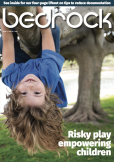
On 24 July, new K-6 syllabuses were released for teachers in NSW. The transition from a skills-based curriculum to one emphasising knowledge and ‘explicit teaching’ represents a shift in pedagogical philosophy for NSW.
Explicit teaching involves a highly structured approach where teachers provide clear, direct instruction followed by guided practice. This method aims to ensure that students understand foundational concepts before moving to independent work.
In contrast to inquiry-led learning, where students explore topics and discover knowledge independently, explicit teaching requires teachers to break down information into manageable parts and systematically build students’ understanding.
It is scripted, with the expectation that specific content and knowledge are delivered in a consistent manner. For example, in an English class, vocabulary and context are explained before reading a text, enabling students to grasp the material more fully.
Lessons from Canberra
Explicit teaching has been in place in the Catholic Archdiocese of Canberra and Goulburn since 2020 – providing an insight into what these changes may mean for NSW. Explicit teaching was introduced through the Catholic Education Canberra and Goulburn (CECG) Catalyst initiative, which aimed to embed evidence-based teaching practices.
Over 1700 teachers and 21,000 students have participated in this journey. Buzzwords such as repetition, interleading and spacing are the catchcry shared by some of our members with experience in this space.
Teachers were initially given 30 minutes additional release time and allotted pupil-free days to support Catalyst’s implementation. Resources were gradually developed and shared to alleviate the increased workload.
Member feedback
Members in this process will tell you that while this support was provided, along with some resources, initially there was a huge increase in workload as teachers were creating their own resources for some curriculum areas. From dialogue with members in the ACT, as well those in NSW who have trialled explicit teaching, the feedback is clear: to make this transition work, adequate time, support and resourcing are essential.
Despite the initial challenges, the response from staff has been largely positive. One teacher member noted, “You need to check what you think you know at the door and be prepared to try it – when you see the data, it is a no-brainer.”
Explicit teaching has proven effective in improving student outcomes, with teachers reporting significant time savings and improved student confidence and learning retention.
A controversial transition
While there has been some positive feedback on the Catalyst initiative, explicit teaching remains divisive. Critics argue that it stifles creativity and critical thinking, essential components of a holistic education. Others worry about the potential for increased teacher burnout due to the intensive preparation and delivery required. Teacher members have made such comments as:
“It is too prescriptive and doesn’t respect the teacher’s professional judgement.”
“I have no voice at the end of the day.”
“It’s a sausage machine approach.”
“We need time to prepare resources – it’s a massive increase in workload.”
However, proponents point to the clear structure and focus on foundational knowledge as key benefits. The success of explicit teaching hinges on its implementation. As one teacher observed, “Some of it is counterintuitive, like going faster and doing more to support attention, instead of slower. That’s not to say you can’t go slow and there are of course times that warrant it.”
Opportunities and challenges
In light of the experiences of members in Canberra and Goulburn Diocese, the new NSW curriculum and the explicit teaching model represent a bold step towards reshaping education.
While the transition brings both opportunities and challenges, it is essential to continue evaluating its impact on teachers and students. As we navigate this new terrain, the voices and experiences of IEU members will be crucial in shaping the future of teaching and learning in NSW and the ACT.










































































































































